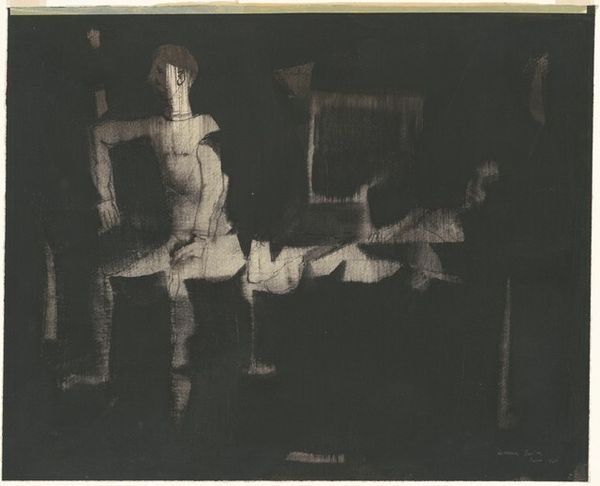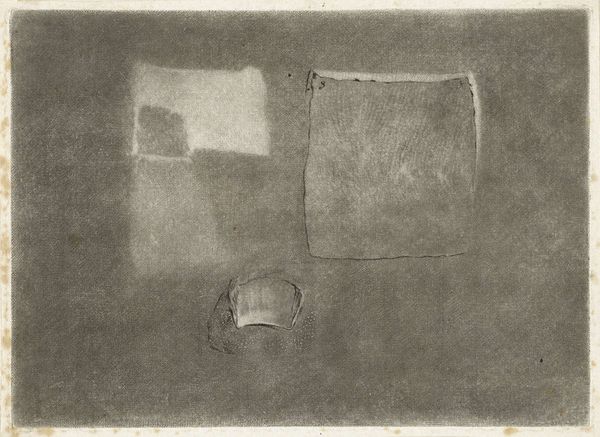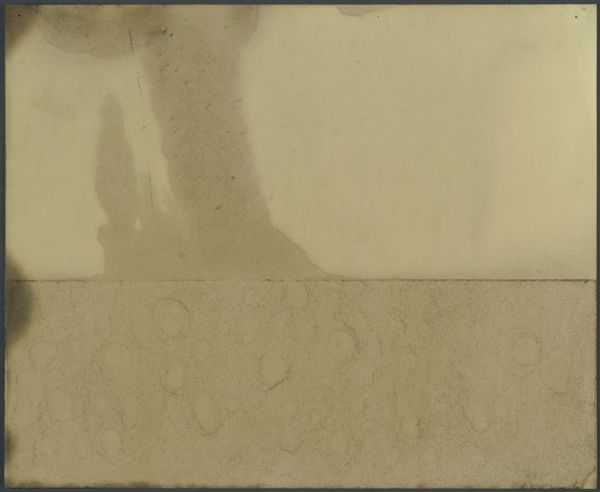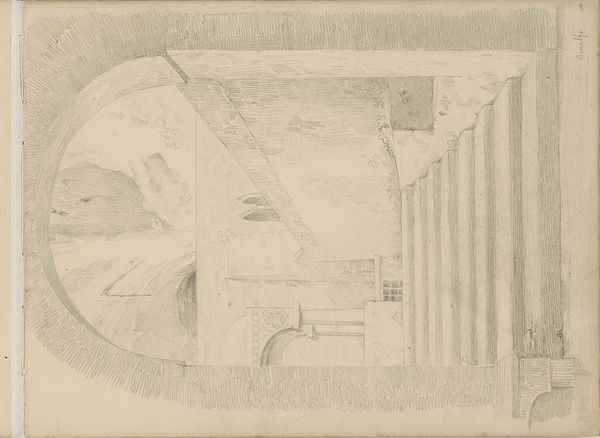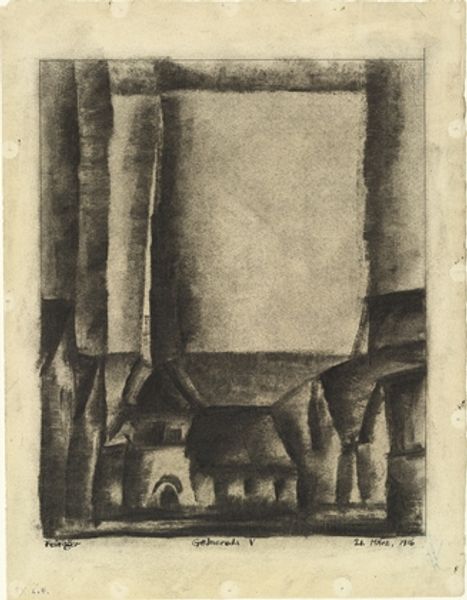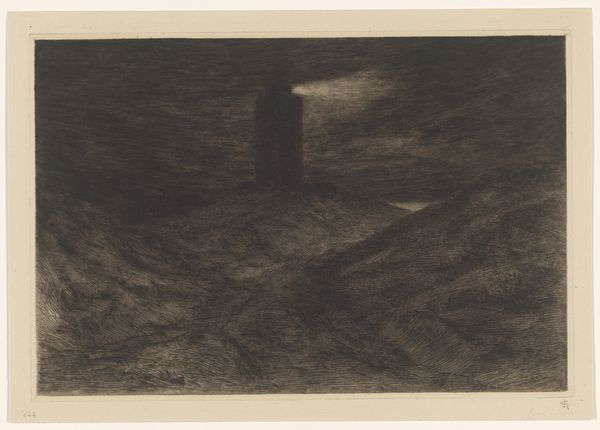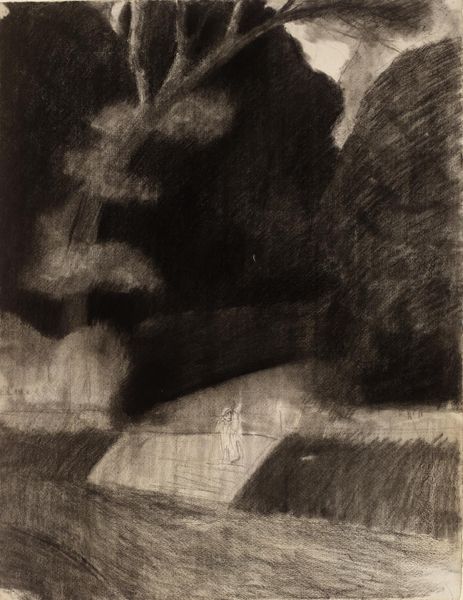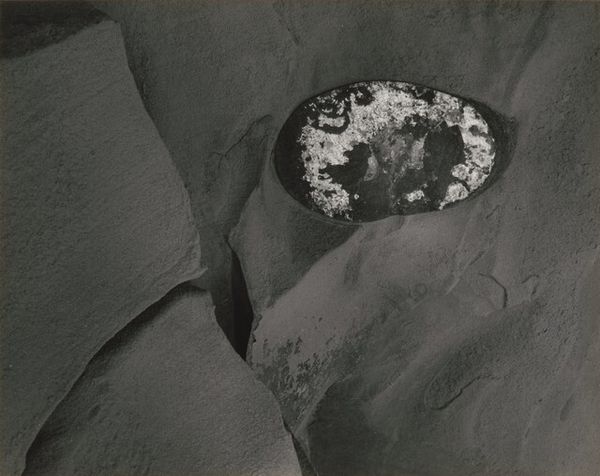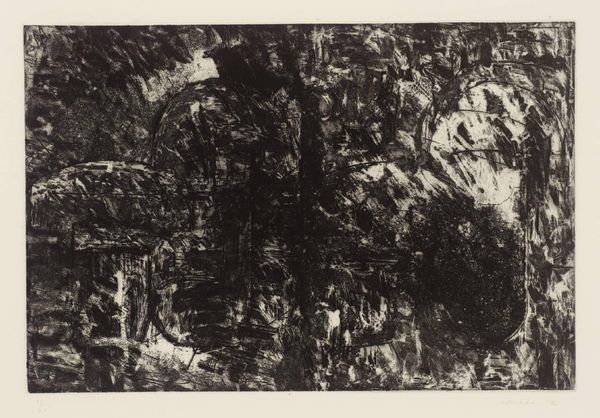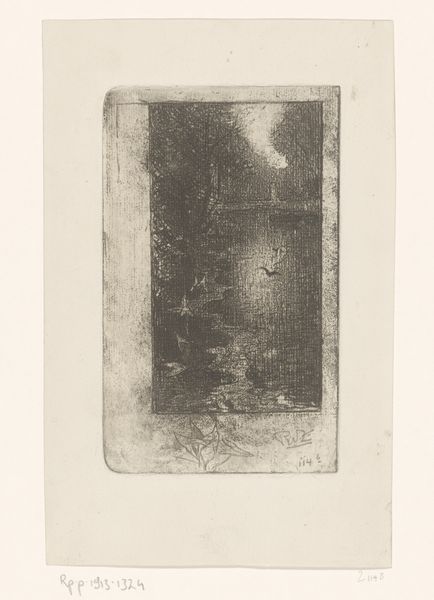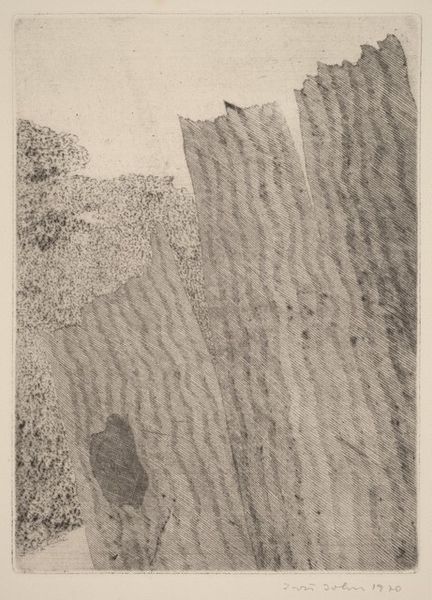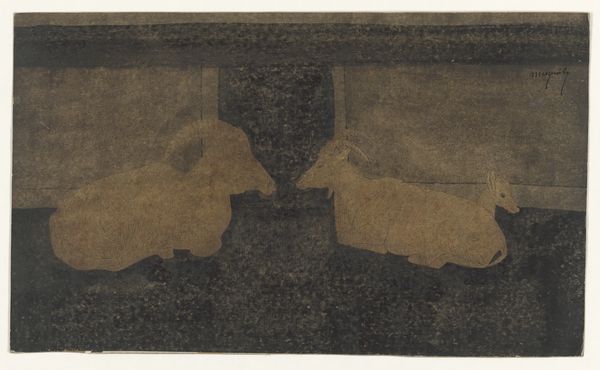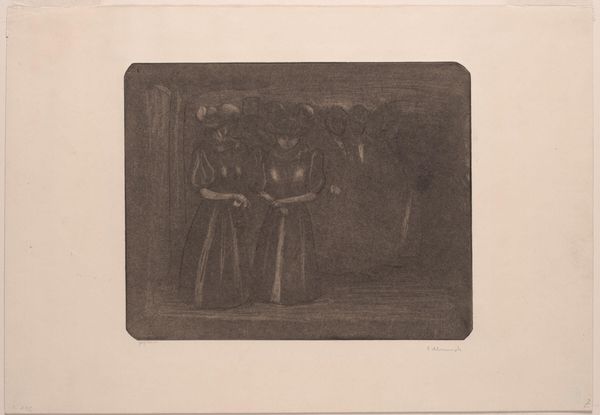
drawing, charcoal
#
drawing
#
landscape
#
charcoal drawing
#
geometric
#
underpainting
#
charcoal
#
modernism
Copyright: Public Domain: Artvee
Editor: This is Herbert Crowley's "Arrival in a Dark Landscape," a charcoal drawing made sometime between 1911 and 1924. It has this mysterious, almost dreamlike quality to it, mostly due to the soft application of charcoal. How would you approach interpreting this piece? Curator: Indeed, the very title signals a sense of transition and obscurity. Looking at the formal elements, notice how Crowley utilizes a limited tonal range, focusing on gradations of gray to create a subdued and atmospheric effect. Observe the interplay of geometric shapes, contrasting sharp angles with soft, blurred edges. Editor: I see the geometric forms, especially in what looks like buildings or structures in the background. But is there more we can glean just from his mark-making and composition? Curator: Absolutely. The hazy underpainting technique contributes to the overall sense of ambiguity. Light seems to emerge from within the charcoal itself, defying a single light source and creating a subtly dynamic tension. The composition avoids a clear focal point, leading the viewer's eye through a web of tonal relationships. Editor: So, it's not about finding a subject, but about how those forms relate on the picture plane? Curator: Precisely. The 'landscape' is secondary to the emotional impact achieved through purely visual means. Crowley directs our focus toward line, shape, and value instead. We must recognize that his application of technique speaks for itself, regardless of the location represented. Editor: I see what you mean; even though it's representational, it's pushing into abstraction through its tonal values and composition. That opens up a whole new perspective. Curator: Yes, and by appreciating the artwork through its form we become less reliant on contextualizing details, and more perceptive to Crowley's command of space. I trust this close inspection has revealed something new to you? Editor: Definitely, it shifted my understanding from subject matter to a real appreciation of Crowley’s artistic methods. Thank you.
Comments
No comments
Be the first to comment and join the conversation on the ultimate creative platform.
